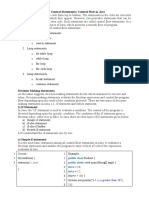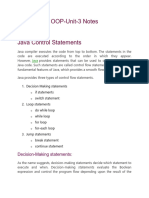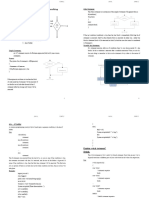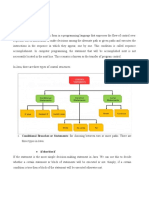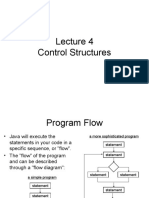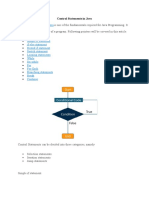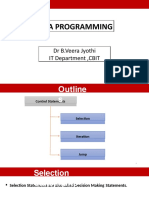0% found this document useful (0 votes)
26 views21 pagesChapter-6 Flow of Control
Chapter 6 discusses the flow of control in Java, detailing control flow statements which include decision-making, loop, and jump statements. It explains various types of decision-making statements like if, if-else, switch, and loop constructs such as for, while, and do-while loops. Additionally, it covers jump statements like break and continue, providing syntax and examples for each type of control flow statement.
Uploaded by
kalpanavashishthgaurCopyright
© © All Rights Reserved
We take content rights seriously. If you suspect this is your content, claim it here.
Available Formats
Download as DOCX, PDF, TXT or read online on Scribd
0% found this document useful (0 votes)
26 views21 pagesChapter-6 Flow of Control
Chapter 6 discusses the flow of control in Java, detailing control flow statements which include decision-making, loop, and jump statements. It explains various types of decision-making statements like if, if-else, switch, and loop constructs such as for, while, and do-while loops. Additionally, it covers jump statements like break and continue, providing syntax and examples for each type of control flow statement.
Uploaded by
kalpanavashishthgaurCopyright
© © All Rights Reserved
We take content rights seriously. If you suspect this is your content, claim it here.
Available Formats
Download as DOCX, PDF, TXT or read online on Scribd
/ 21


